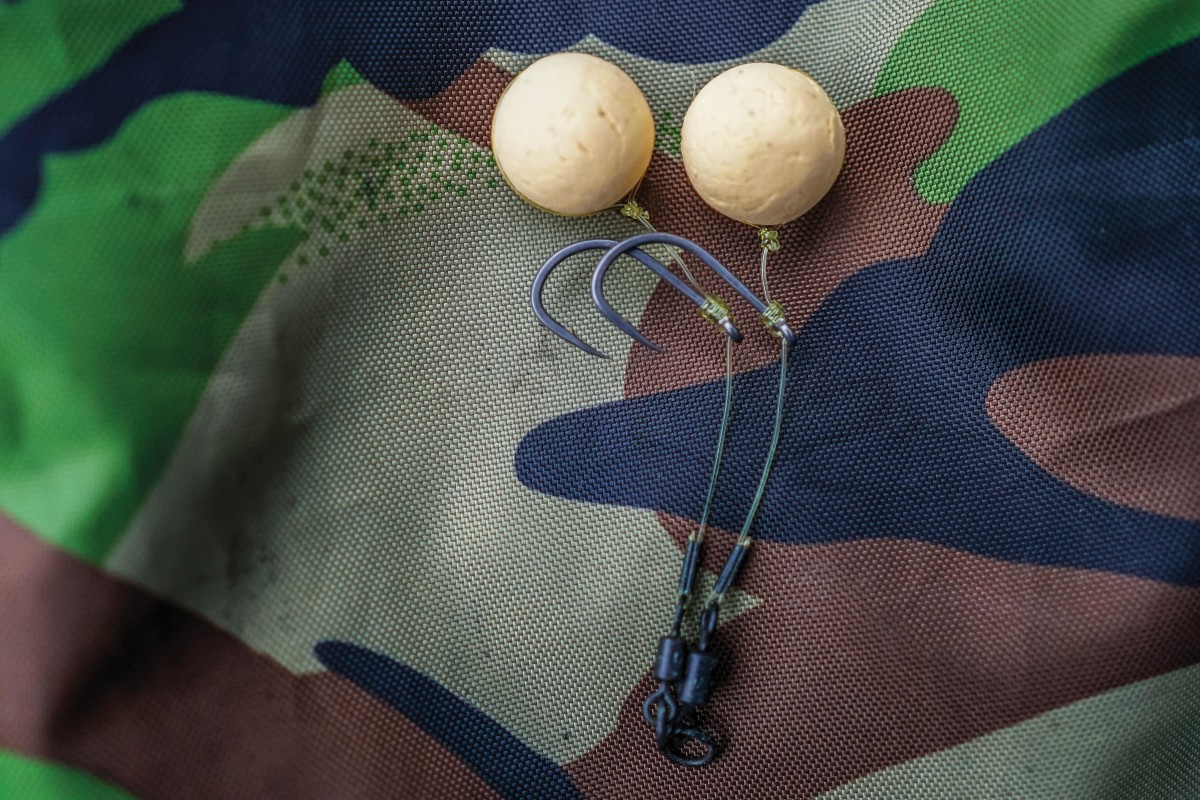
Chodding Around
Inception, improvement and innovation… Jon ‘Shoes’ Jones details the full history of the Chod Rig, along with revealing some very neat tweaks you probably won’t have seen before.
Chod Rigs appear to have been around for years and years. In fact, it all began in the early nineties. The Carp Society was in full swing, with its regular regional slide shows up and down the country, hosted by some of the best anglers around. The famous Winter Conference/AGM at Dunstable was the only carp show available, and it was truly epic, but I digress.
It was at one of these regional slide shows in the Midlands, hosted by the lovable and sadly departed Barry Griffiths, where the Chod Rig all began for me. Frank Warwick was the month’s top angler and, as always, the venue was packed with eager carp anglers, all looking for a magical rig, or a bait to end years of frustration. These were not to be, and never will be, but something did come from the show. Frank shared details of a little rig he was using with the gathered masses, a rig which, in my opinion, started the whole thing off.
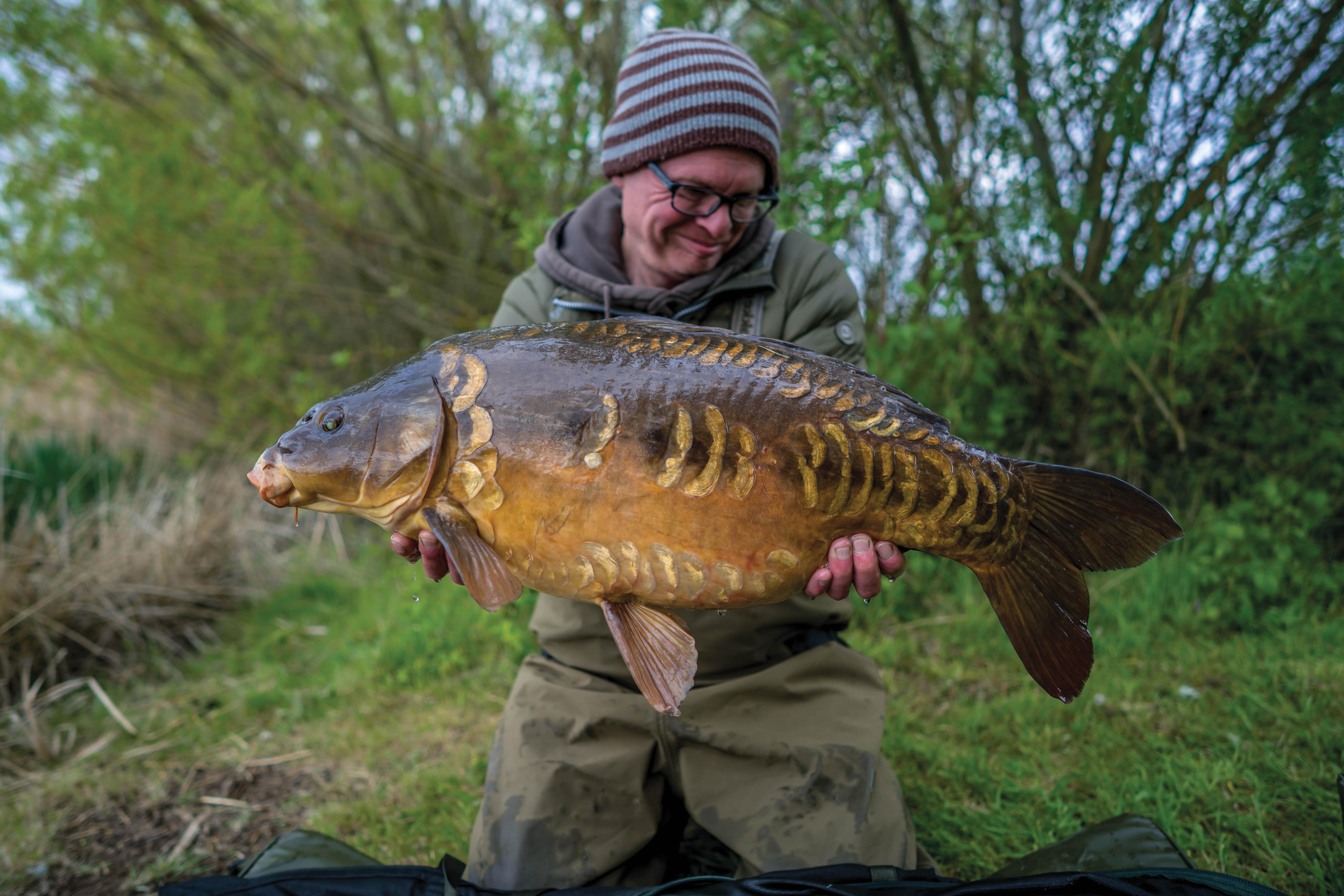
IT WAS SO DIFFERENT: And it had a stiff Hair
The Short Rig was different to anything else I had seen at that time. It was presented on a helicopter set-up, very much the same as a Chod Rig is today. The modern-day Chod Rig, however, is allowed to run up the line until it hits a bead stop. Frank, though, positioned his beads either side of the rig, at a distance of his choice.
A few years later, I met up with Frank during some filming on the Mangrove in Shropshire. He was using white wool to find the depth of the silt, so he could position the rig accurately at the desired distance above the lead. Hence, the Silt Rig. This incorporated another little gem: a stiff Hair. I’ve talked about this before, and I’ve caught carp on it from many venues. Frank would tie a small Grinner loop, slightly oversized compared to the bait he was using. Then, using a Knotless Knot, he would tie on his hook etc. To me, this was once again completely different to anything else being used at the time. In our eyes, it was a big game-changer, and it worked… it worked well!
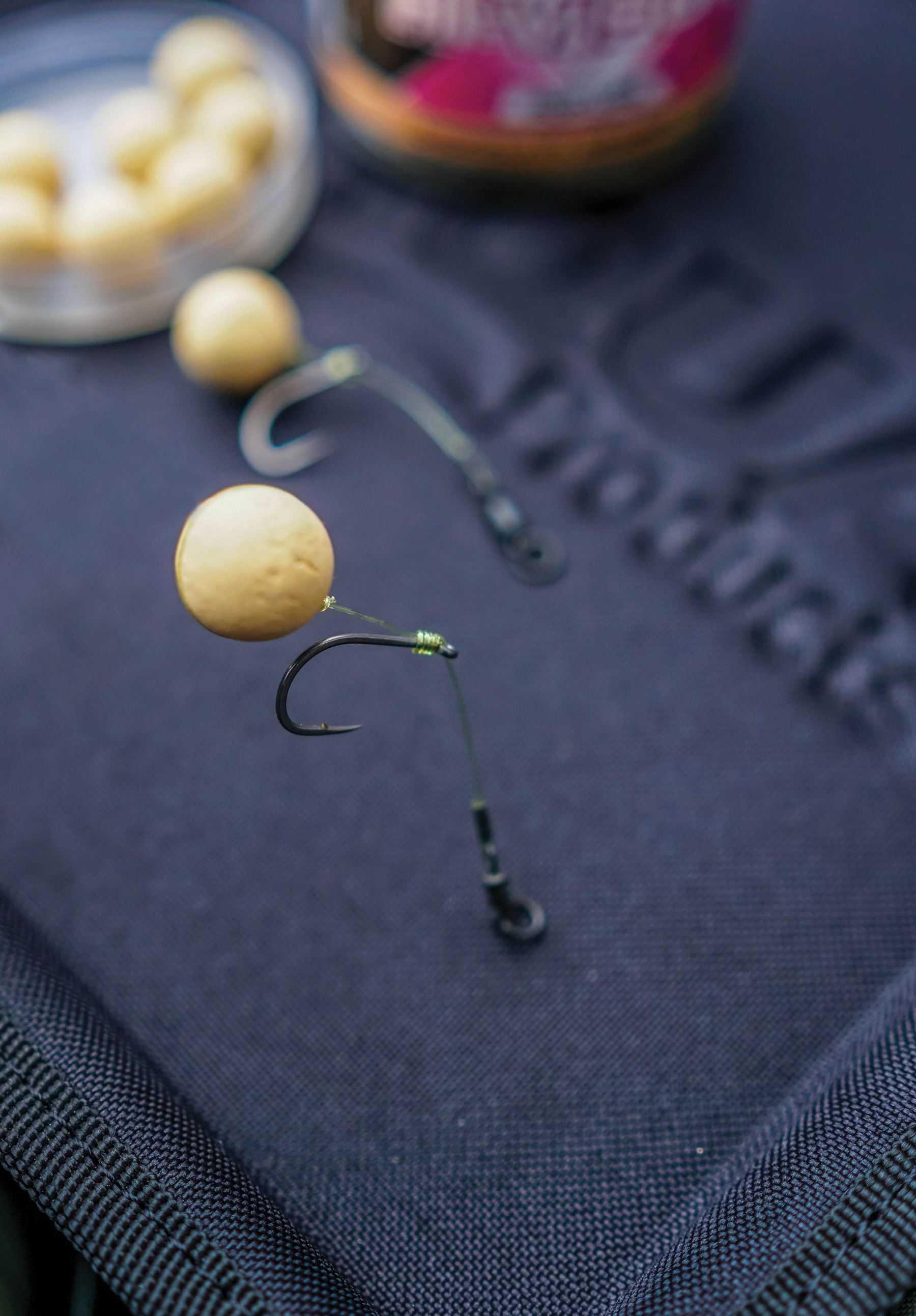
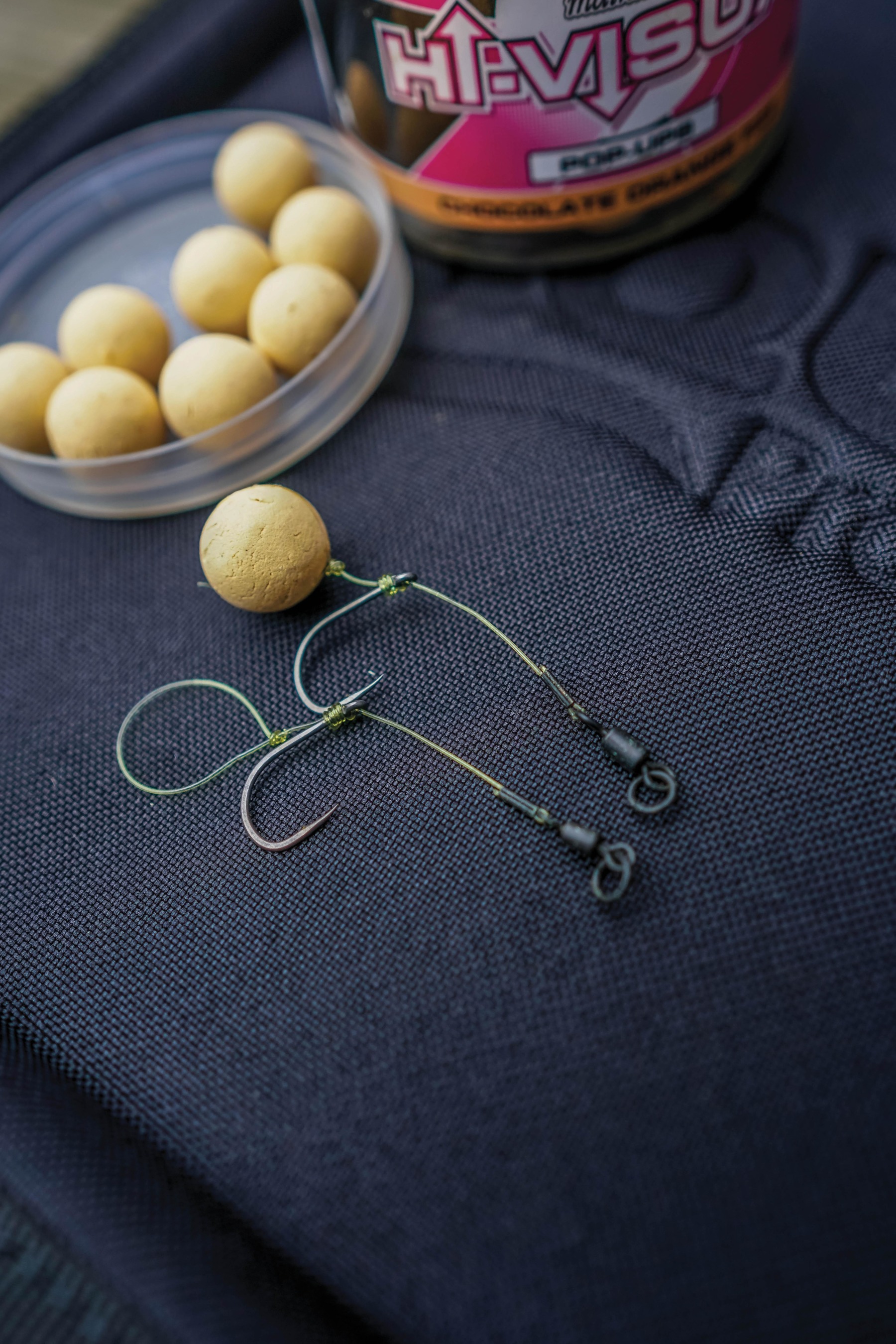
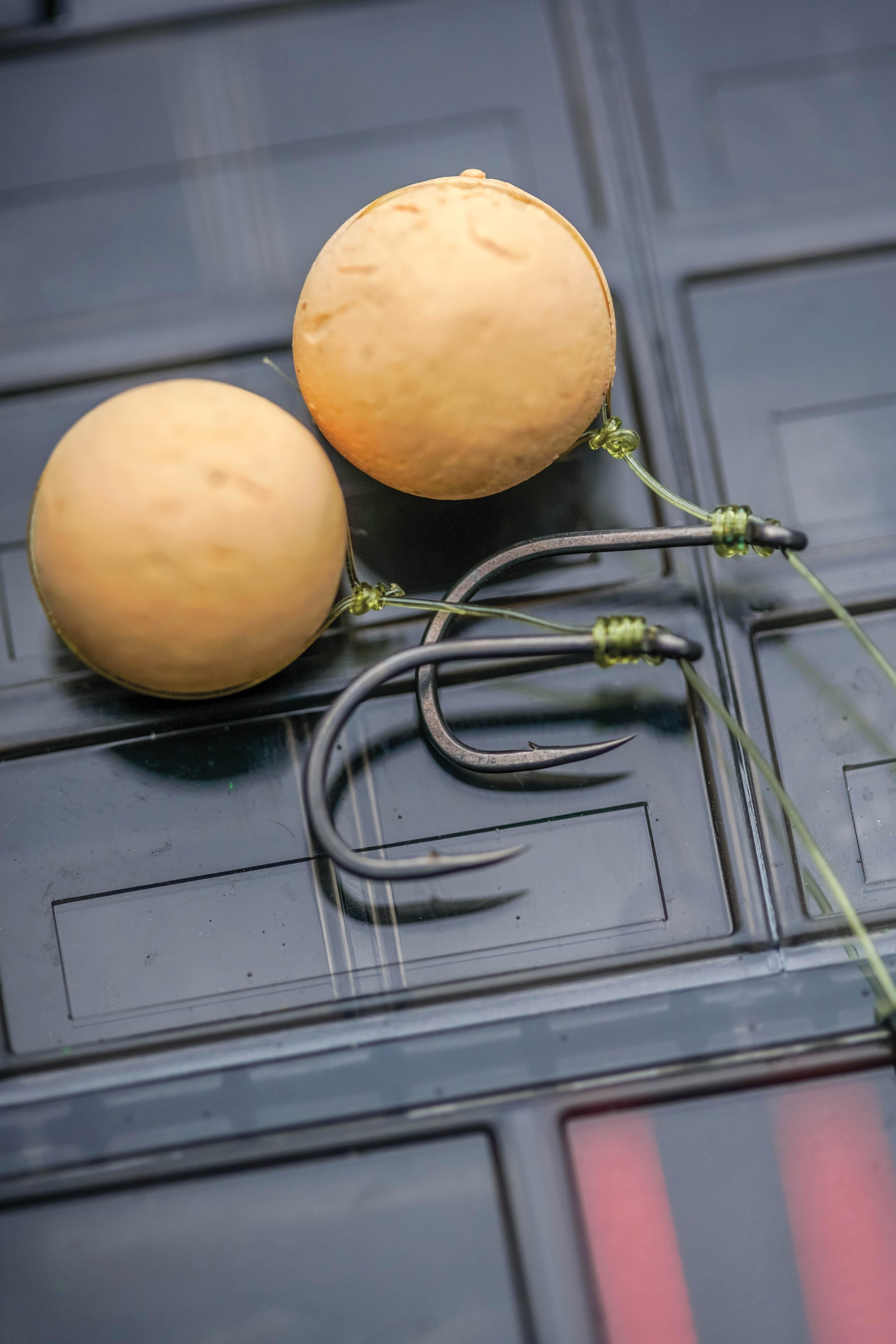
IMPROVEMENTS ARE MADE: But they could be better…
Things evolve, anglers play around with rigs and improvements are made, and so we now have today’s Chod Rig. It’s a better-performing rig, but it remains very similar to the original Short Rig. It can still be improved, not in respect of its hooking power or presentation qualities, but its hooked-to-landed ratio—which can be frustratingly low at times. The thing is, the lead is too close to the hooklink, and with it being near the carp’s mouth, the hook can easily be dislodged. You might be saying, “Hold on, some tubing between the rig and the lead will solve the issue… or why not use a lead-release system?” These help, but they’re not 100 per cent effective. Let me explain…
In last month’s CARPology, I talked about the Bungee Rig which, when tied correctly, is an effective, shock-absorbing set-up which helps with hook-holds. This simple method can also be incorporated in a Chod Rig to help absorb the buffeting which occurs during the fight, and will hopefully see you land more carp.
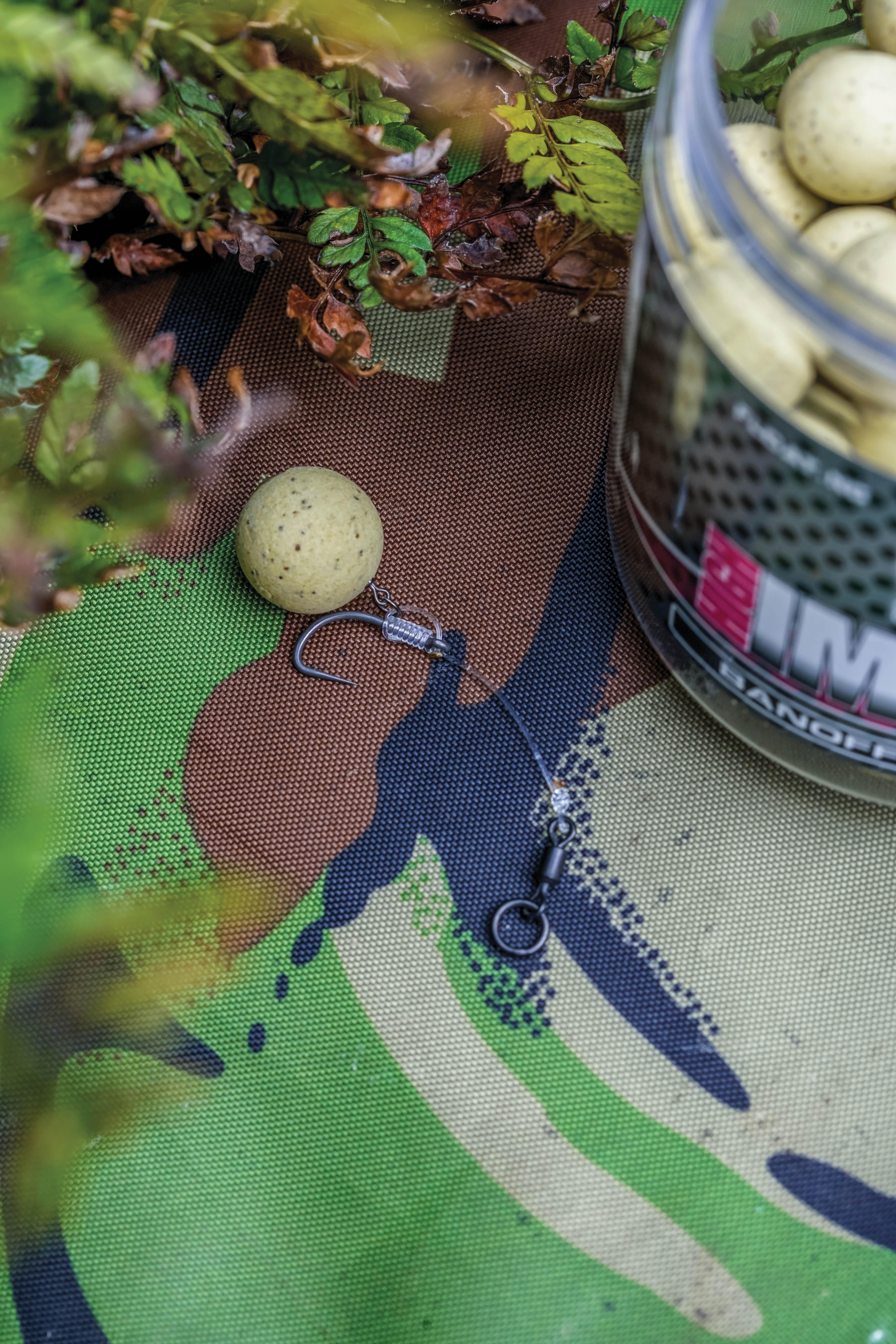
It was during a few guest sessions at RH Fisheries’ the Avenue that I bumped into my old friend, Dave Chancellor. Dave has been fishing for many years, and we first met in the eighties on Patshull’s Church Pool. This man can catch carp, and at the time, he was emptying the Avenue. As you do, I wanted to find out what he was doing. He was on the Chod Rig, and at first glance, it was nothing special. Closer inspection, however, revealed a couple of changes that appeared to be working… he’d not lost anything.
‘DC HOPPER RIG’: Don’t ask!
After a few sessions watching him land carp after carp, I was lucky enough to get a swim next to where all the carnage was happening, and I was able to help him land a few carp. He showed me the rig, called the ‘DC Hopper Rig’—don’t ask! This consisted of a Short Rig—aka Chod Rig—and a short, five-inch section of 15lb Power Gum attached via a swivel at one end, with the lead at the other. The Chod Rig sat above the swivel on a bead, and this slid up to the top bead as normal. The Power Gum boom section, though, doubled up as a shock absorber and kept the hooklink away from the lead. This was only a subtle change, but it improved performance massively in respect of fish hooked and then landed, and merely attaching the lead to an elasticated section helped keep the hook in position.
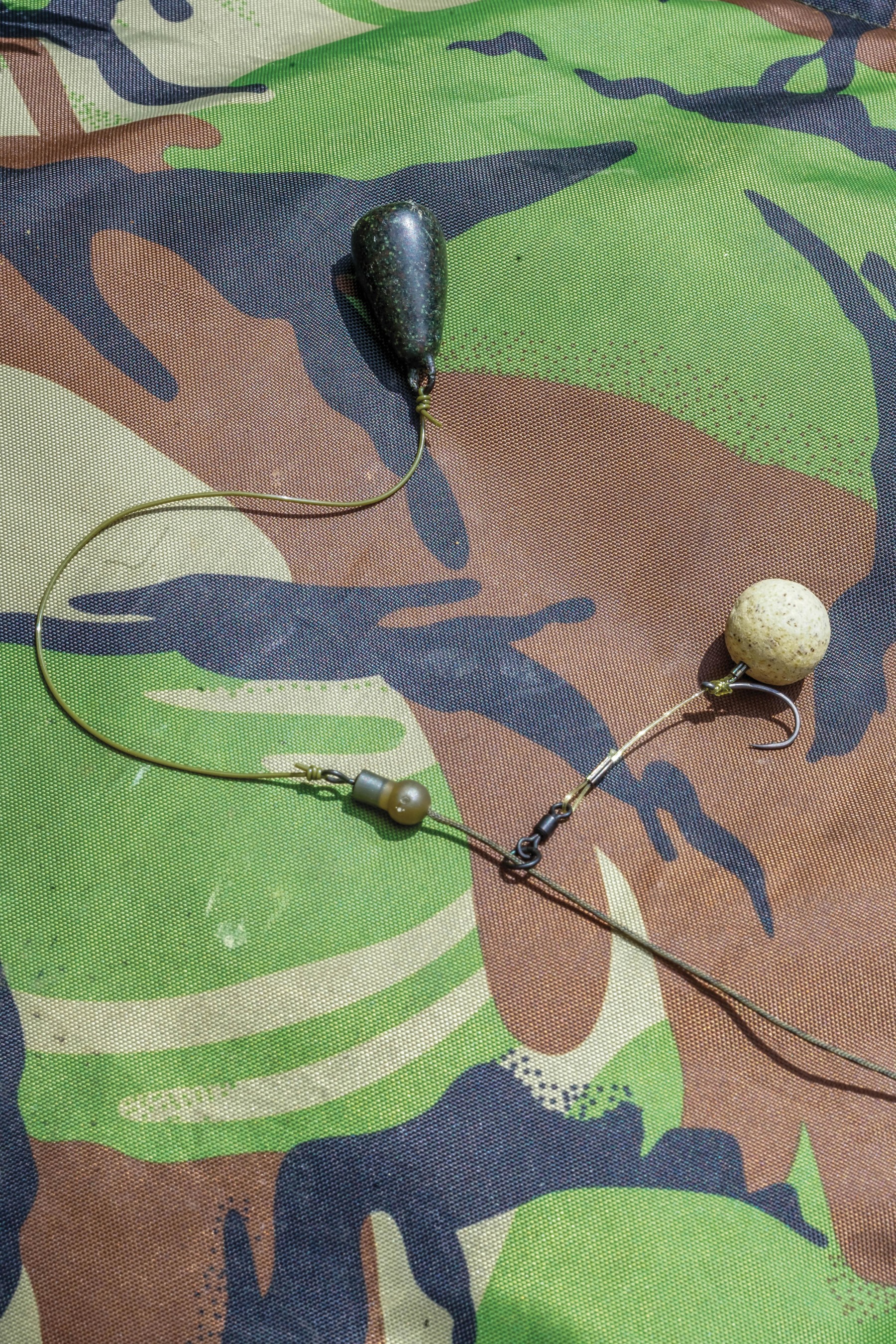
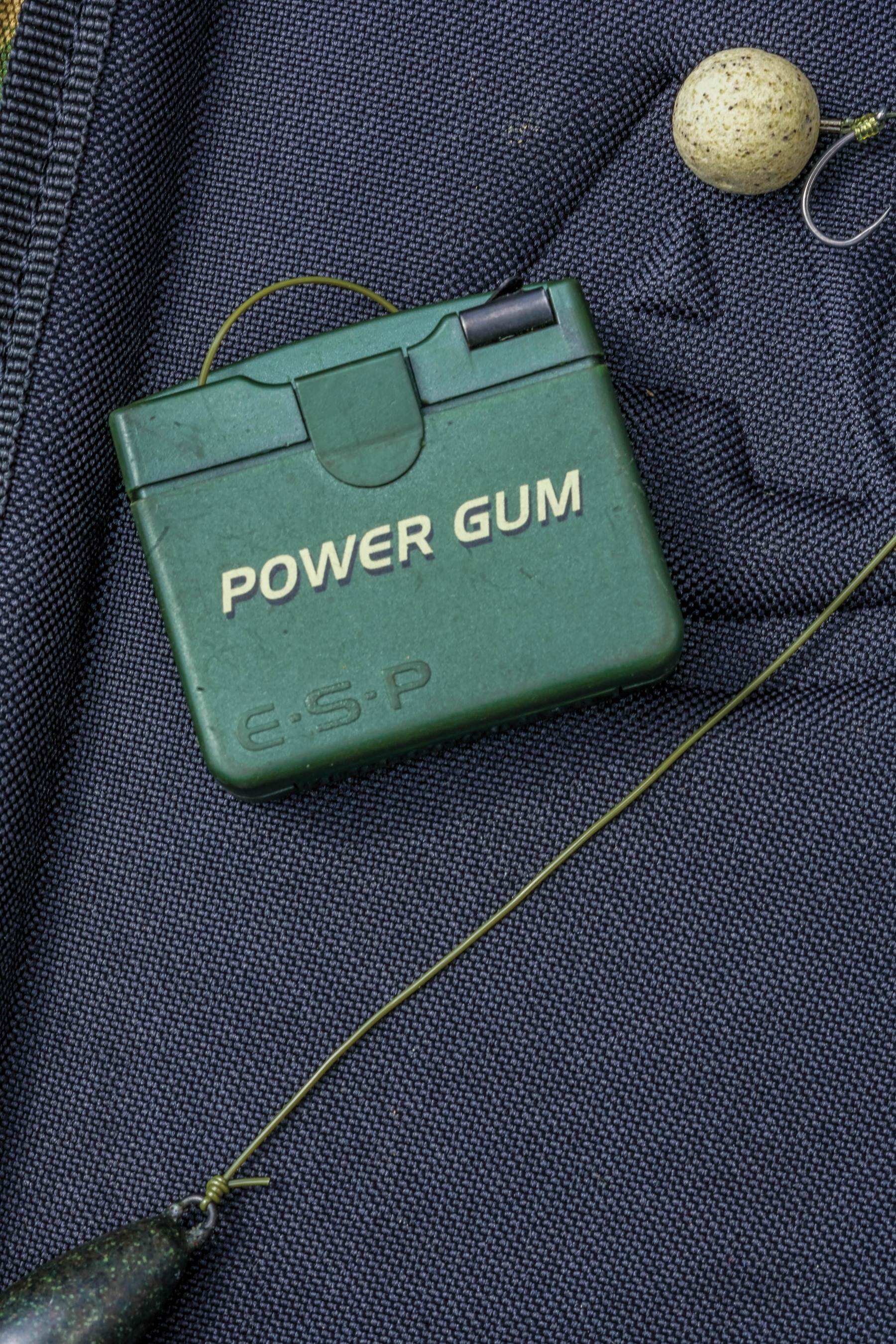
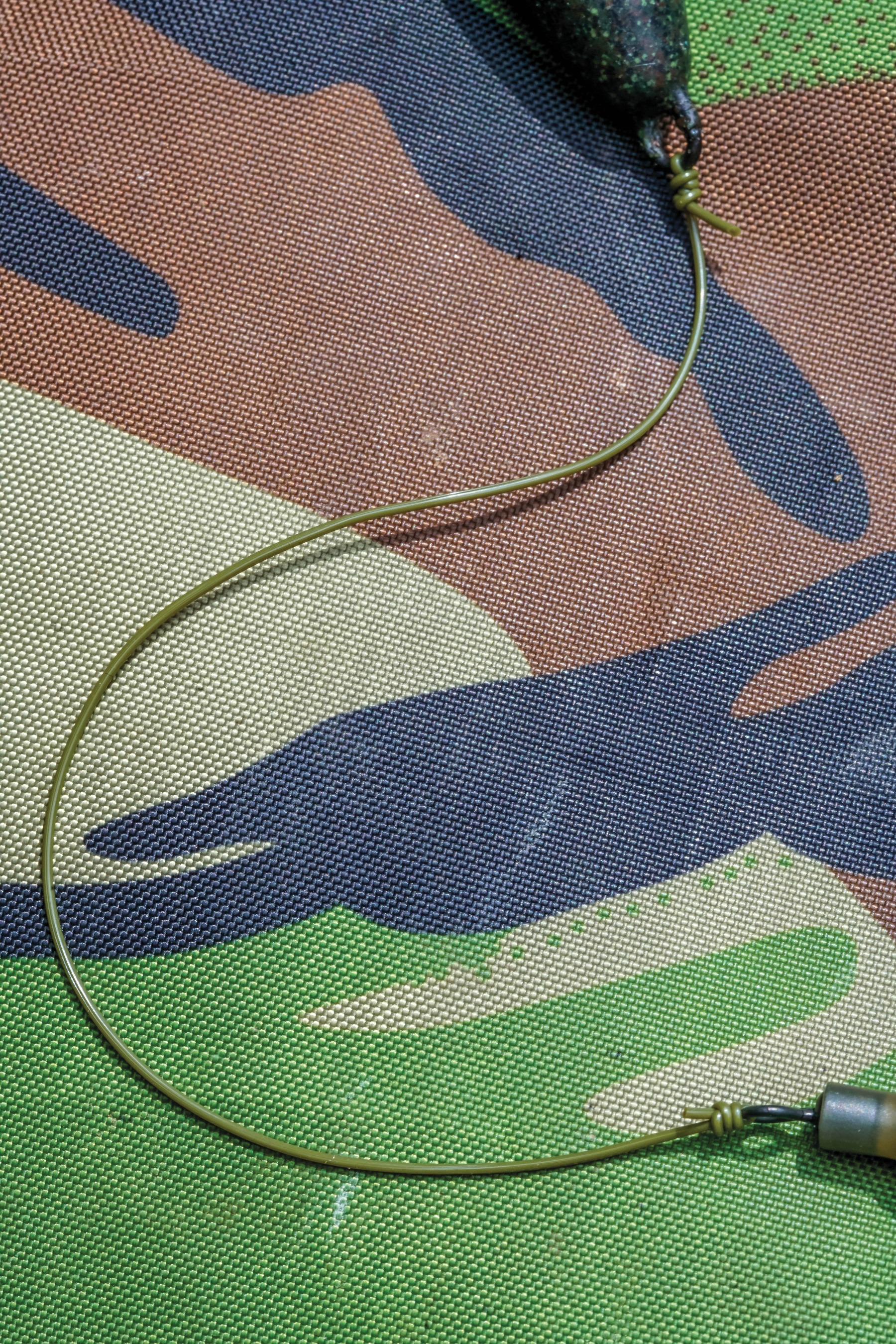
Without the elasticity of the Power Gum section, the lead has nothing to absorb the movements of the carp, and being so close to the hooklink, there isn’t enough stretch in the line—none whatsoever with leadcore. The addition of the short section really did improve things.
As for the rig itself, Dave made a couple more changes. He used crimps to keep his rigs really short, but he’d also developed a new way of presenting wafters.
BOTTOM-BAIT CHODS: A neat little trick
Bottom-bait Chods (BBCs), have been spoken about many times; I remember Adam Penning talking about them quite a lot, and they work well. Dave, though, used a little trick to present a critically balanced bait—wafters to all younger readers—a little differently. Instead of using a small loop and metal ring, Dave would make up a small Hair and crimp a very small loop on the end. The bait is then attached with floss, and pushed on to the stiff Hair. A lighter is then used to secure it in place. The hooklink is then straightened slightly, rather than it being curved when fishing a pop-up. This way, the rig lies flat, with the balanced bait sitting directly above the hook. This balanced-bait approach works wonders over particles, yet everyone thinks you’re using a pop-up!
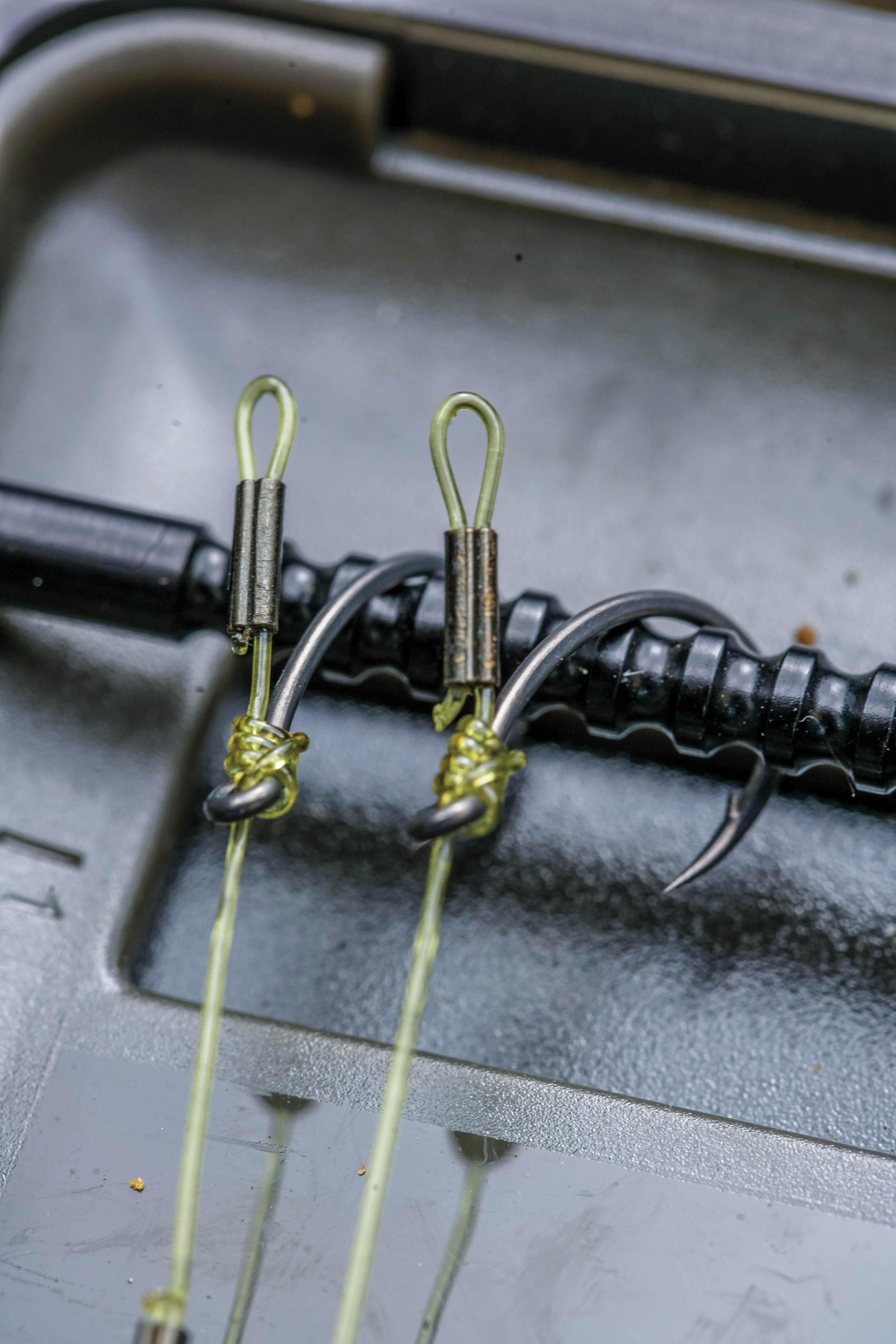
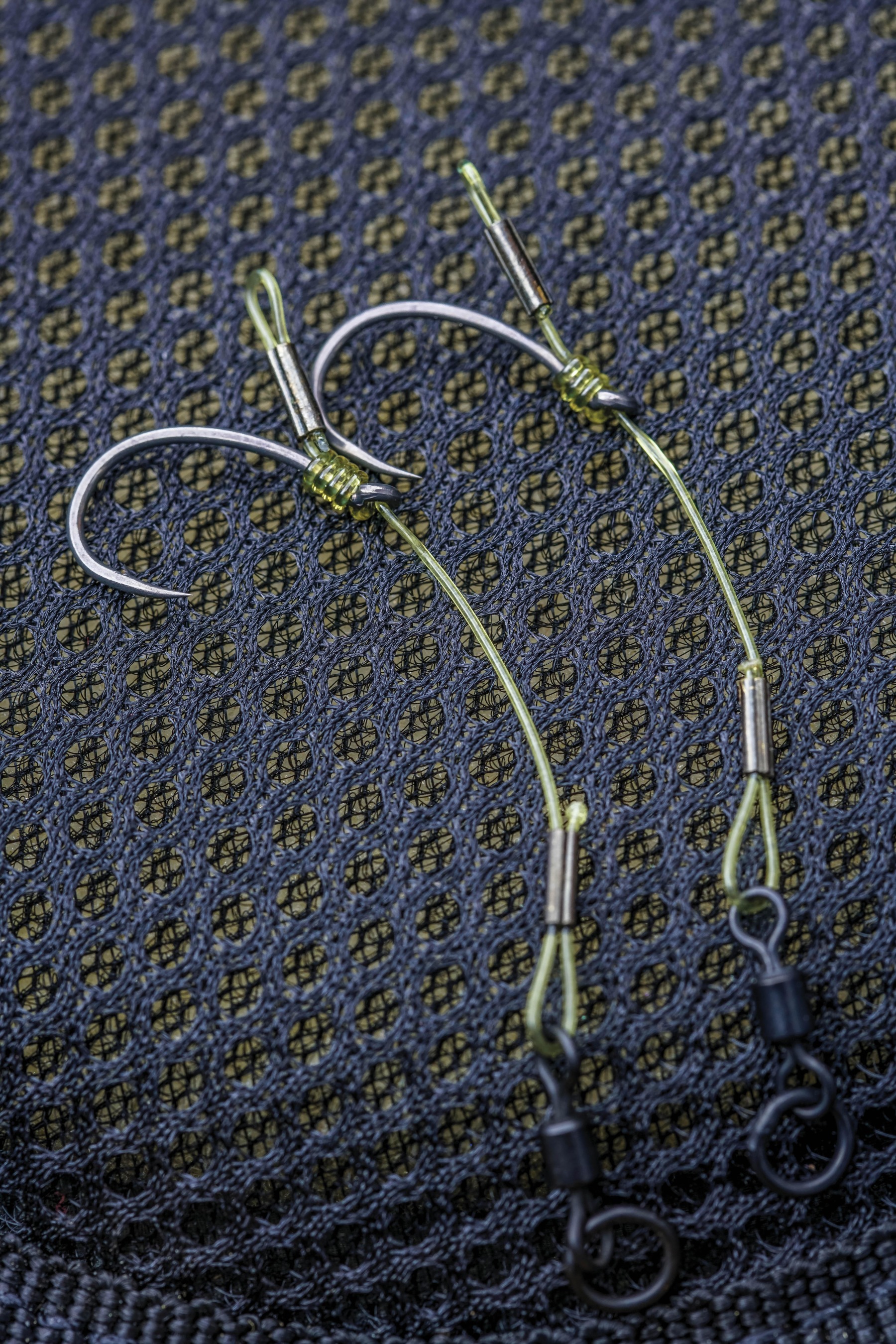
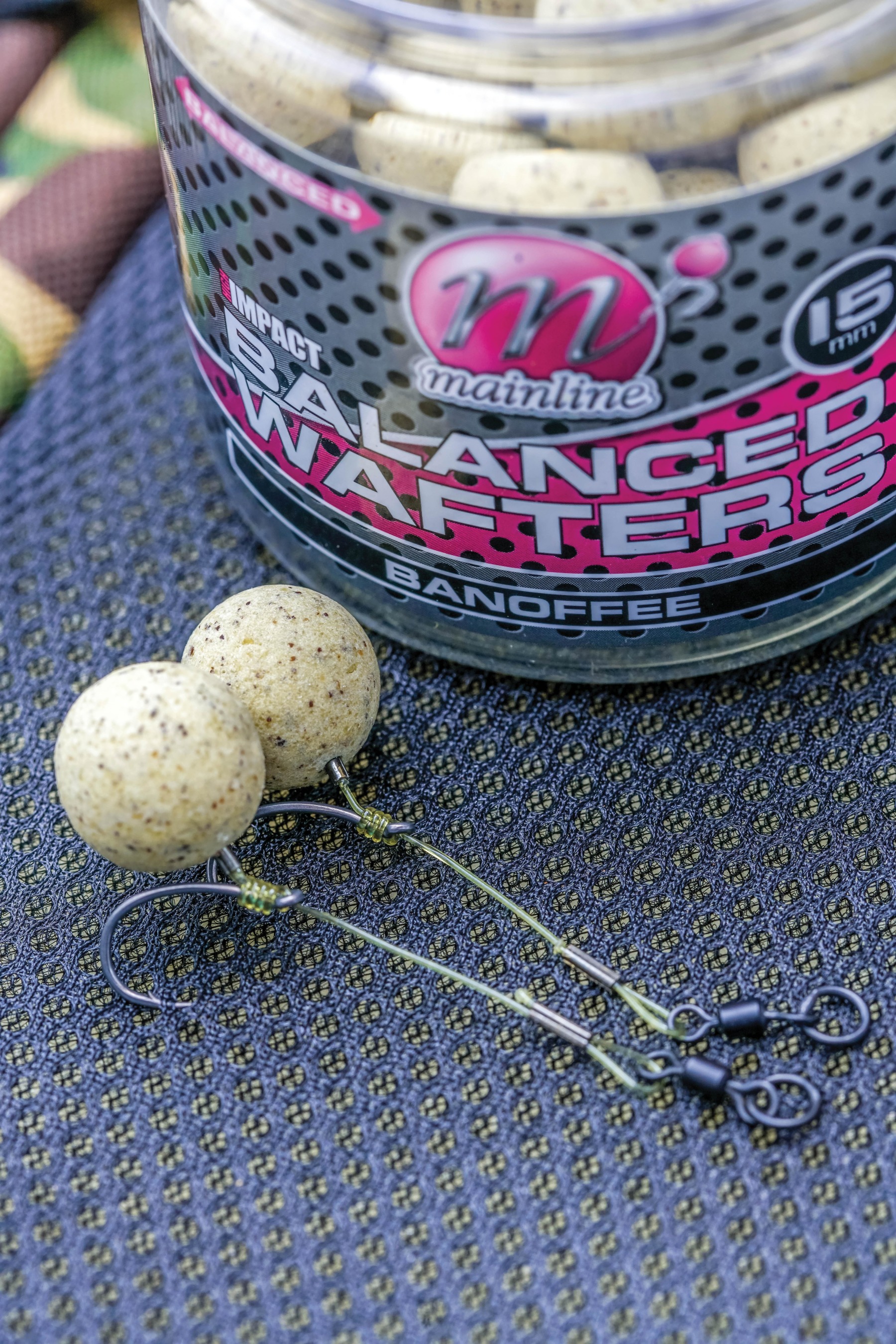
THERE’S JUST ONE ISSUE: And that’s lead size
The addition of the Power Gum, and the option to fish wafters as well as pop-ups, in my eyes, improve the original rig. I witnessed the modified set-up working time after time, and it wasn’t until I tried it myself, that everything all truly fell into place. You don’t have to try it yourself, but when tied and fished correctly, you’d be amazed how good it is. The only issue you’ll come across is that you can’t use large leads, as the Power Gum doesn’t allow you to cast them far. My suggestion is to use anything up to 3oz. These will be fine, but don’t try to whack them far.
It’s amazing how Frank’s Short Rig evolved over time into the modern Chod Rig, and to Dave’s ‘DC’ improvement. None will be the ultimate rig, but on their day, they’re very special indeed.






